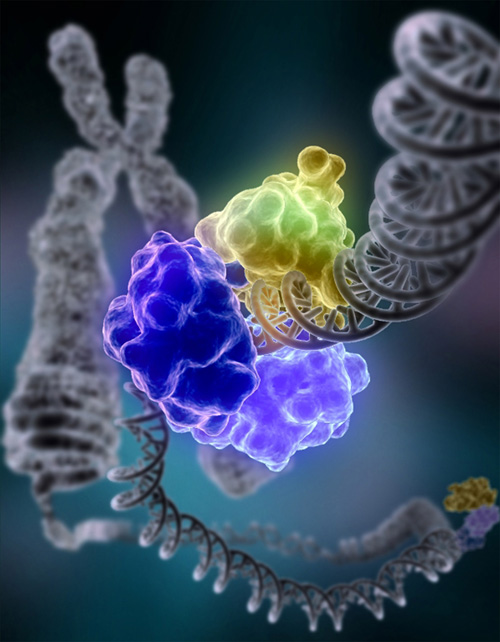 |
| Lymphocyte |
Natural Killer (NK) cells may be our innate, anti-cell sentinels that first arise in the yolk sac between day
8 and 10. Simultaneously maternal, uterine NK cells
promote fetal development by secreting growth promoting factors. Distinct sets of NK cells mature
during early fetal development by associating with differentiating cells and tissue environments. Typically NK cells mature in around 25-35 days. By comparison, the developing embryonic
heart begins pumping blood around day 22. The transcriptome, lineage and variety of each terminally differentiated embryonic NK cell and whether, in adults they continue to exist is unknown and genetically undefined.
The prospect of
innate immune memory is a developing interest that has been shown to link innate and adaptive cell sets by epigenetic responses. Natural Killer cells have been a particular focus of this research because they were once considered innate and non-adaptive. Recently there is an emerging body of evidence
that suggests otherwise. Whether NK cell memory arises and which NK cells participate in its establishment is not established science. Without more research whether and to what extent very narrow NK cell protein expressions distinguish cell and tissue lineages will continue unanswered. However, some good research supports the important idea of NK memory and
conserved lineage.
A study on the
heterogeneity of NK cells, by transcriptome in human bone marrow identified distinct NK populations, including one expressing higher levels of immediate, early genes indicative of a homeostatic activation. Analysis identified a transitional population between CD56bright and CD56dim NK cells. Most interesting they reported on a donor with GATA2-T354M mutation who exhibited a reduced percentage of CD56bright NK cells with altered transcriptome and elevated cell death indicating the smaller number of CD56bright NK cells were contributing to the donors disease progression.
In a mouse model
of CMV infection, a specific population of NK cells expands, contracts after control of the virus and generates long-lived “memory” NK cells that are more protective during a second encounter. Other reports indicate
antigen specificity and
antibody dependent NK mediated cytotoxicity in autoimmune disease by a sub-population of NK cells expressing a combination of specific receptors that was associated with apoptosis and the depletion of IgG in individuals with autoimmune thyroid disease.
 |
| Coronavirus Lung Cells |
In Covid19 admitted patients
NK cells and lymphocytes were depleted including by apoptosis and exhausted. This late stage condition developed for some time prior to admission. The published research identified two receptors as particularly important for CoV2 viral entry into a cell. Ace2 to which CoV2 binds and TMPRSS2 that cleaves its Serine protein enabling entry. Only
one report, so far provided useful information about expression of these genes in NK cells of lungs. From the 57,020 lung cells on the UMAP plot only NK cells expressing Ace2-TMPRSS2 connected Muscle, Fibroblasts, T-Cells and Macrophages.
A four year experiment tracked bar-coded NK cells introduced to rhesus macaque's. The results indicated that during homeostasis and moderate proliferative stress, peripheral, compartmentalized, self-renewal can maintain the composition of distinct,
differentiated NK cell sub-populations.
Blunted categorizations of NK receptor expressions may be a sub-set limitation, but the good news is that more recent research is defining NK cells in increasingly diverse ways. We are also learning to identify
diseases that infect NK cells including
influenza, that induces apoptosis,
HIV,
Hepatitis c and Epstein Bar. A study found
peptide specific recognition of human cytomegalovirus strains control expansion of adaptive NK cells. Another Covid19 study compared the transcriptome in
lung tissues of older patients, including NK cells and concluded that genes induced by SARS-CoV-2 infection tend to increase in expression with aging, and vice versa.
Although still a little abstract for science, its plausible that a cell contracting a disease could recall its NK 'memory cell', its NK anti-cell counterpart to annihilate it because it differentiated beyond its NK anti-cell phenotype range. If true, an indiscriminate disease that also targeted the NK anti-cell and eliminated it would prevent annihilation of its phenotype differentiated counterpart cells. By example, SARS-CoV2 would also bind the Ace2-TMPRSS2 expressing NK anti-cell, infect and kill it then NK immune resistance would be compromised and cell differentiation may rapidly progress to become lethal.













